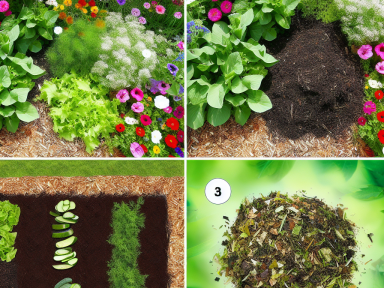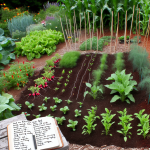Understanding Mulching
Mulching is more than just an aesthetic practice; it’s a key component to a healthy garden. Here are some insights to make the most out of your mulching efforts:
**Types of Mulch**
- Organic Mulch: This includes shredded leaves, grass clippings, straw, wood chips, and compost. Organic mulch improves soil structure, adds nutrients, and promotes beneficial microbial activity.
- Inorganic Mulch: Examples are gravel, rocks, and plastic films. These materials do not decompose and are best for pathways or areas where you don’t want any growth.
**Application Tips**
- Thickness Matters: A 2-3 inch layer of organic mulch is sufficient for most gardens. Thicker layers can prevent water and air from reaching the soil.
- Avoid Mulch Volcanoes: Do not pile mulch against the base of plants or trees. This can lead to rot and pest issues. Always leave a gap around the stems and trunks.
- Seasonal Considerations: In autumn, use a thicker layer of mulch to protect against frost. In spring, a thinner layer can help conserve moisture and suppress weeds without overheating the soil.
The Art of Composting
Composting turns kitchen waste into black gold for your garden. Here’s how to do it right:
**Creating a Balanced Compost**
- Greens: These are moist and rich in nitrogen. Examples include fruit scraps, vegetable peels, grass clippings, and coffee grounds.
- Browns: These are dry and rich in carbon. Examples include dry leaves, straw, cardboard, and paper scraps.
- Balance is Key: Aim for a mix that is roughly 50% greens and 50% browns. Too much nitrogen will create a smelly, anaerobic pile, while too much carbon will slow down decomposition.
**Compost Pile Management**
- Size and Location: Your compost pile should be at least 3×3 feet to maintain the necessary heat. Choose a shady, well-drained spot for optimal results.
- Turning the Pile: Turn your compost pile every 1-2 weeks to aerate it. This speeds up decomposition and prevents foul odors.
- Moisture Content: The compost pile should be as damp as a wrung-out sponge. Too dry and the decomposition will halt; too wet and it will turn anaerobic.
Combining Mulching and Composting for Maximum Benefit
An efficient gardener knows how to integrate mulching and composting for the healthiest garden:
**Sequential Use**
- Mulch with Compost: Use mature compost as mulch. This not only suppresses weeds but also slowly adds nutrients to the soil as it decomposes.
- Foundation for Mulch: Add a base layer of compost under your mulch. This helps improve soil fertility directly where the plant roots can access it.
**Seasonal Strategies**
- Spring Preparation: In early spring, apply compost to your garden beds to add nutrients before planting. Follow this with a layer of mulch to retain soil moisture.
- Autumn Care: After harvesting, top dress your beds with compost to replenish the nutrient-depleted soil. Cover with a thick layer of mulch to protect against winter erosion.
By finely tuning your mulching and composting techniques, you’ll create a sustainable, low-maintenance garden that’s incredibly productive.



GIPHY App Key not set. Please check settings